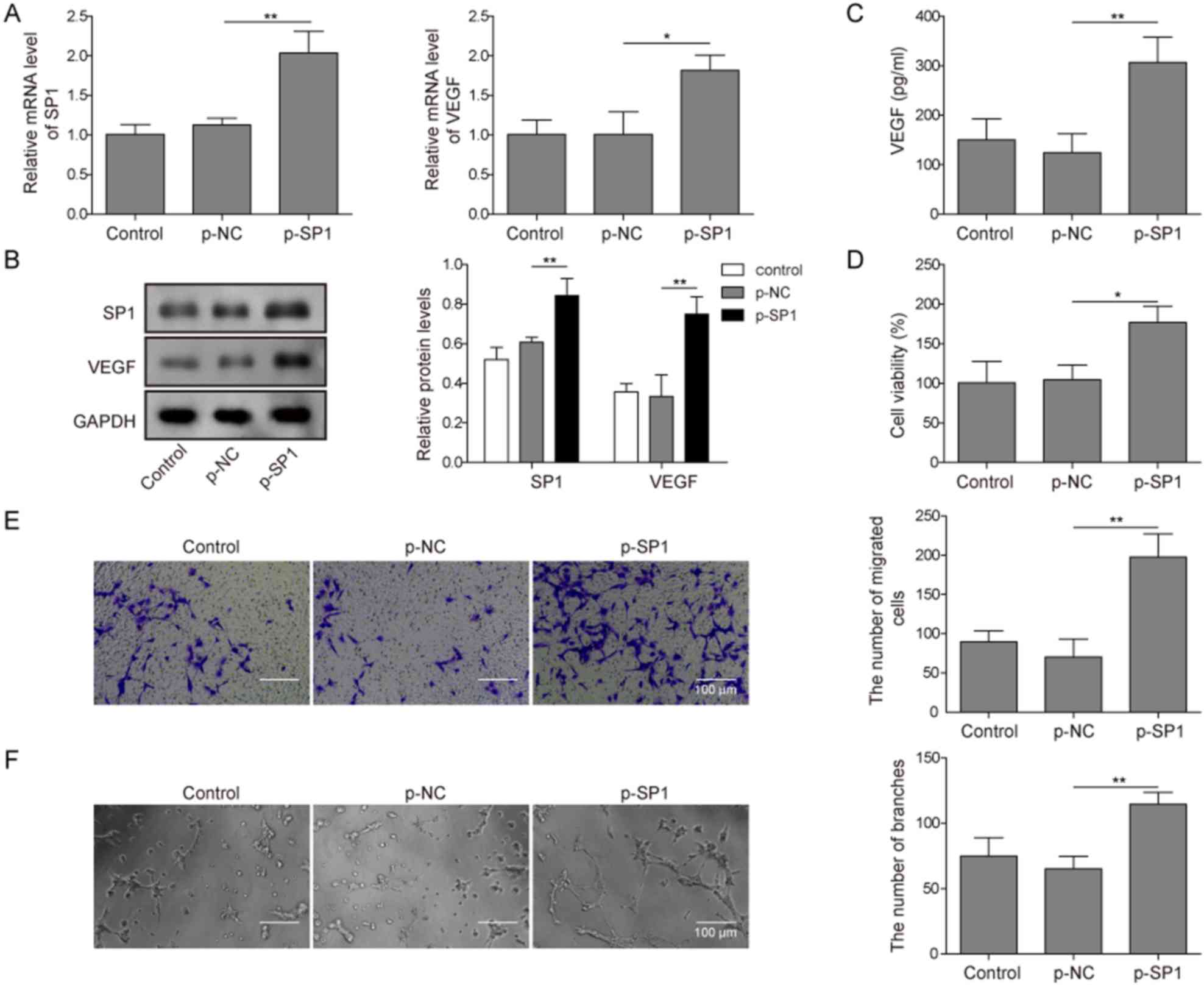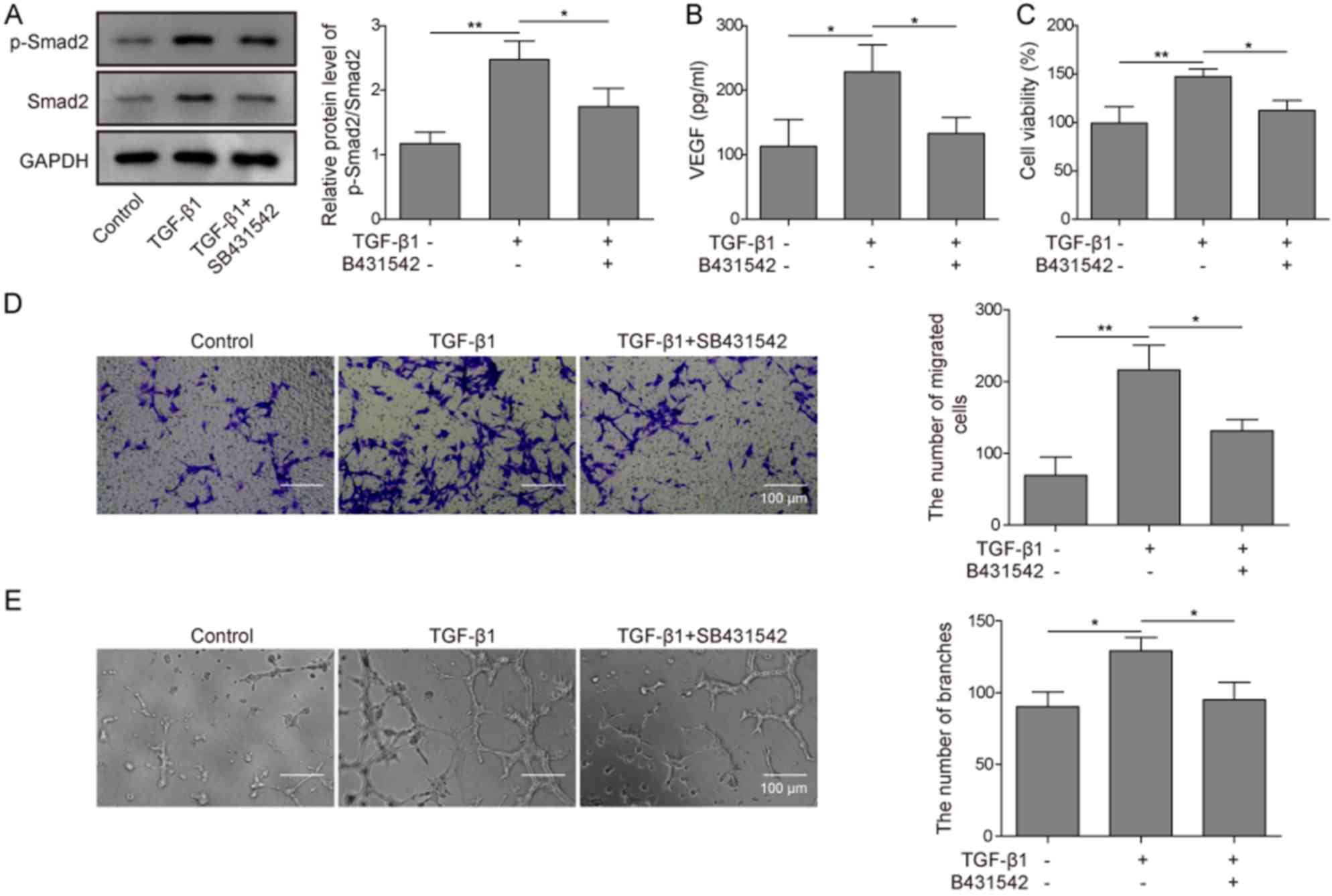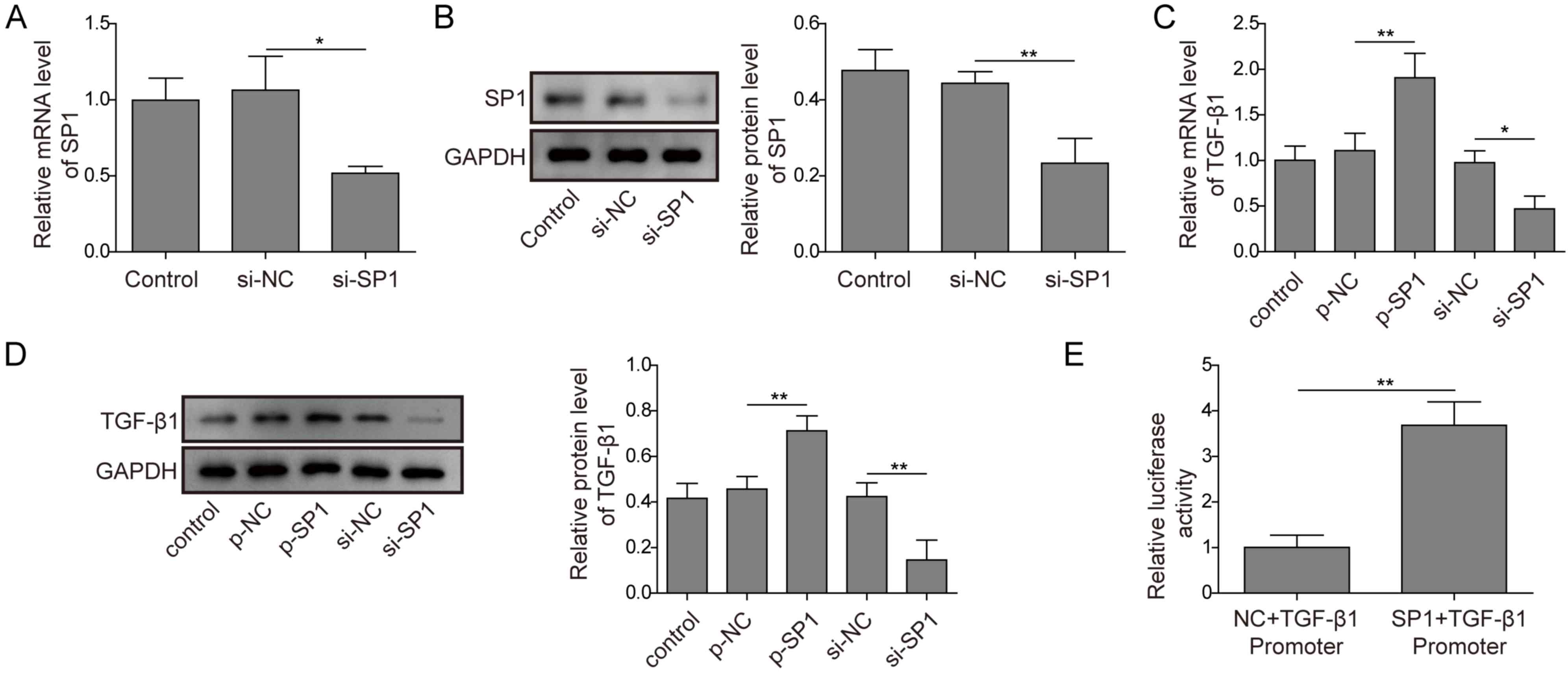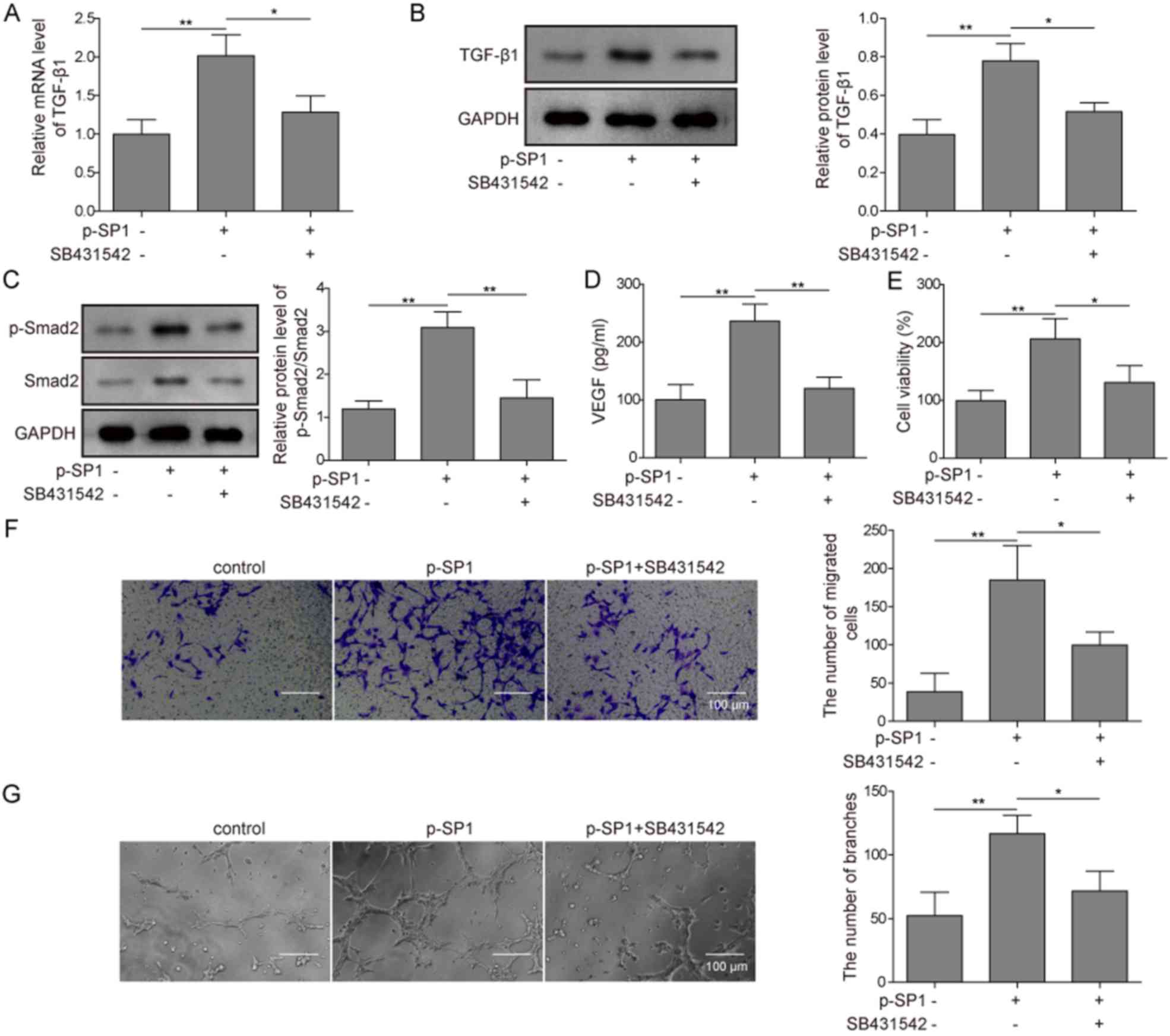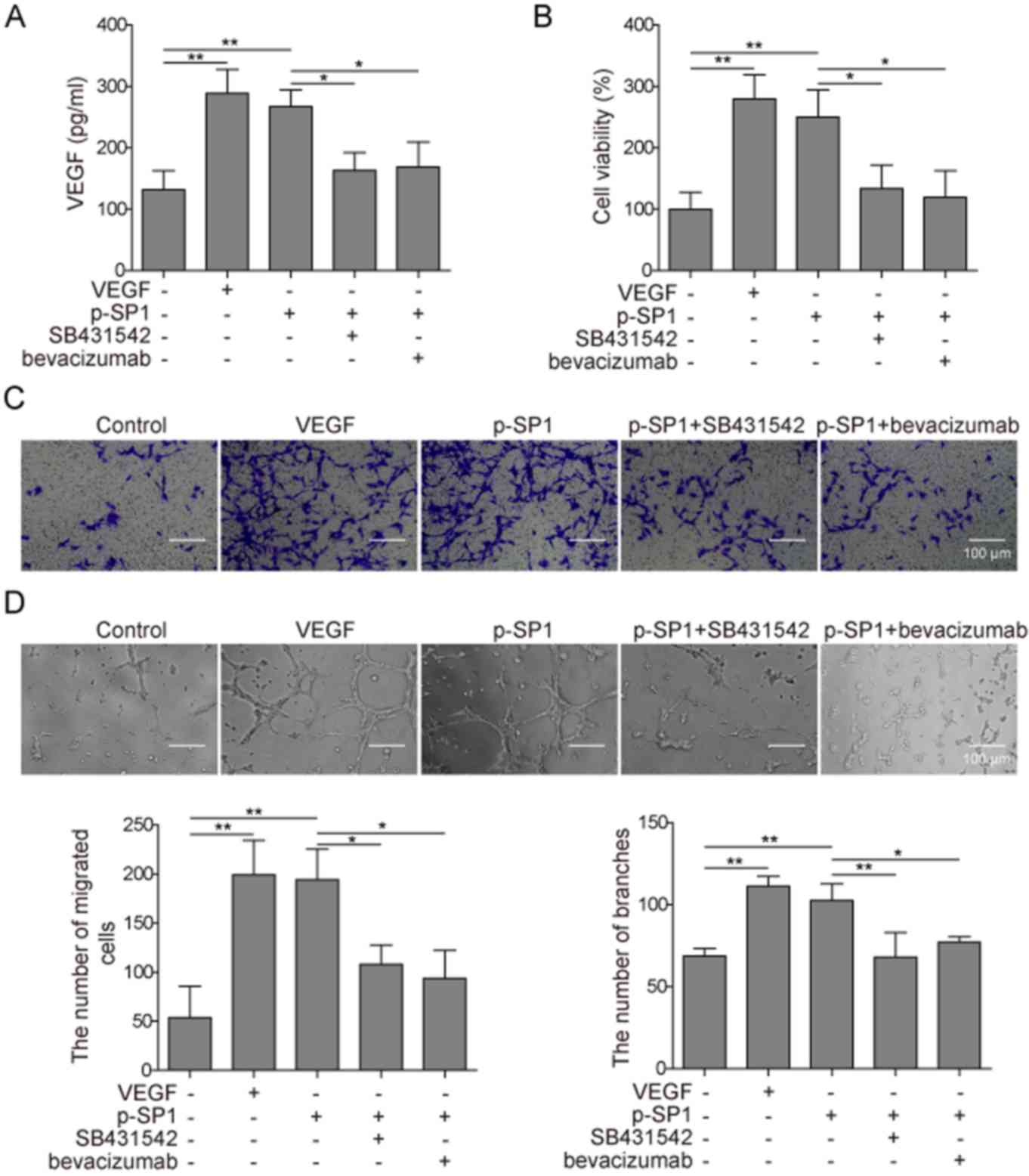|
1
|
Okoturo E, Ogunbanjo OV and Arotiba GT:
Spontaneous regeneration of the mandible: An institutional audit of
regenerated bone and osteocompetent periosteum. J Oral Maxillofac
Surg. 74:1660–1667. 2016. View Article : Google Scholar : PubMed/NCBI
|
|
2
|
Gornitsky J, Azzi AJ and Cugno S:
Spontaneous osteogenesis of a traumatic mandibular defect in the
pediatric population. J Craniofac Surg. 30:1999–2000. 2019.
View Article : Google Scholar : PubMed/NCBI
|
|
3
|
Grosso A, Burger MG, Lunger A, Schaefer
DJ, Banfi A and Di Maggio N: It takes two to tango: Coupling of
angiogenesis and osteogenesis for bone regeneration. Front Bioeng
Biotechnol. 5:682017. View Article : Google Scholar : PubMed/NCBI
|
|
4
|
Dickson K, Katzman S, Delgado E and
Contreras D: Delayed unions and nonunions of open tibial fractures.
Correlation with arteriography results. Clin Orthop Relat Res.
302:189–193. 1994.
|
|
5
|
Hankenson KD, Dishowitz M, Gray C and
Schenker M: Angiogenesis in bone regeneration. Injury. 42:556–561.
2011. View Article : Google Scholar : PubMed/NCBI
|
|
6
|
Ramasamy SK, Kusumbe AP, Itkin T,
Gur-Cohen S, Lapidot T and Adams RH: Regulation of hematopoiesis
and osteogenesis by blood vessel-derived signals. Annu Rev Cell Dev
Biol. 32:649–675. 2016. View Article : Google Scholar : PubMed/NCBI
|
|
7
|
Frohlich LF: Micrornas at the interface
between osteogenesis and angiogenesis as targets for bone
regeneration. Cells. 8:E1212019. View Article : Google Scholar : PubMed/NCBI
|
|
8
|
Huang B, Wang W, Li Q, Wang Z, Yan B,
Zhang Z, Wang L, Huang M, Jia C, Lu J, et al: Osteoblasts secrete
Cxcl9 to regulate angiogenesis in bone. Nat Commun. 7:138852016.
View Article : Google Scholar : PubMed/NCBI
|
|
9
|
Qu J, Lu D, Guo H, Miao W, Wu G and Zhou
M: MicroRNA-9 regulates osteoblast differentiation and angiogenesis
via the AMPK signaling pathway. Mol Cell Biochem. 411:23–33. 2016.
View Article : Google Scholar : PubMed/NCBI
|
|
10
|
Chen CY, Su CM, Hsu CJ, Huang CC, Wang SW,
Liu SC, Chen WC, Fuh LJ and Tang CH: CCN1 promotes VEGF production
in osteoblasts and induces endothelial progenitor cell angiogenesis
by inhibiting miR-126 expression in rheumatoid arthritis. J Bone
Miner Res. 32:34–45. 2017. View Article : Google Scholar : PubMed/NCBI
|
|
11
|
Jarad M, Kuczynski EA, Morrison J,
Viloria-Petit AM and Coomber BL: Release of endothelial cell
associated VEGFR2 during TGF-β modulated angiogenesis in vitro. BMC
Cell Biol. 18:102017. View Article : Google Scholar : PubMed/NCBI
|
|
12
|
Wang X, Abraham S, McKenzie JAG, Jeffs N,
Swire M, Tripathi VB, Luhmann UFO, Lange CAK, Zhai Z, Arthur HM, et
al: LRG1 promotes angiogenesis by modulating endothelial TGF-β
signalling. Nature. 499:306–311. 2013. View Article : Google Scholar : PubMed/NCBI
|
|
13
|
Muppala S, Xiao R, Krukovets I,
Verbovetsky D, Yendamuri R, Habib N, Raman P, Plow E and
Stenina-Adognravi O: Thrombospondin-4 mediates TGF-β -induced
angiogenesis. Oncogene. 36:5189–5198. 2017. View Article : Google Scholar : PubMed/NCBI
|
|
14
|
Zhang Z, Zhang X, Zhao D, Liu B, Wang B,
Yu W, Li J, Yu X, Cao F, Zheng G, et al: TGF -β1 promotes the
osteoinduction of human osteoblasts via the PI3K/AKT/mTOR/S6K1
signalling pathway. Mol Med Rep. 19:3505–3518. 2019.PubMed/NCBI
|
|
15
|
Asparuhova MB, Caballé-Serrano J, Buser D
and Chappuis V: Bone-Conditioned medium contributes to initiation
and progression of osteogenesis by exhibiting synergistic
TGF-β1/BMP-2 activity. Int J Oral Sci. 10:202018. View Article : Google Scholar : PubMed/NCBI
|
|
16
|
Wang R, Xu B and Xu H: TGF-β1 promoted
chondrocyte proliferation by regulating Sp1 through MSC-exosomes
derived miR-135b. Cell Cycle. 11:172018.
|
|
17
|
Zhang HW, Wang EW, Li LX, Yi SH, Li LC, Xu
FL, Wang DL, Wu YZ and Nian WQ: A regulatory loop involving miR-29c
and Sp1 elevates the TGF-β 1 mediated epithelial-to-mesenchymal
transition in lung cancer. Oncotarget. 7:85905–85916.
2016.PubMed/NCBI
|
|
18
|
Hu J, Shan Z, Hu K, Ren F, Zhang W, Han M,
Li Y, Feng K, Lei L and Feng Y: MiRNA-223 inhibits
epithelial-mesenchymal transition in gastric carcinoma cells via
Sp1. Int J Oncol. 49:325–335. 2016. View Article : Google Scholar : PubMed/NCBI
|
|
19
|
Yu S, Yerges-Armstrong LM, Chu Y, Zmuda JM
and Zhang Y: Transcriptional regulation of frizzled-1 in human
osteoblasts by Sp1. PLoS One. 11:e01632772016. View Article : Google Scholar : PubMed/NCBI
|
|
20
|
Duttenhoefer F, Biswas SK, Igwe JC,
Sauerbier S and Bierhaus A: Sp1-Dependent regulation of PPARα in
bone metabolism. Int J Oral Maxillofac Implants. 29:e107–e116.
2014. View Article : Google Scholar : PubMed/NCBI
|
|
21
|
Kim J, Lee HW, Rhee DK, Paton JC and Pyo
S: Pneumolysin-induced autophagy contributes to inhibition of
osteoblast differentiation through downregulation of Sp1 in human
osteosarcoma cells. Biochim Biophys Acta Gen Subj. 1861:2663–2673.
2017. View Article : Google Scholar : PubMed/NCBI
|
|
22
|
Su F, Geng J, Li X, Qiao C, Luo L, Feng J,
Dong X and Lv M: Bsp1 promotes tumor angiogenesis and invasion by
activating VEGF expression in an acquired trastuzumabresistant
ovarian cancer model. Oncol Rep. 38:2677–2684. 2017. View Article : Google Scholar : PubMed/NCBI
|
|
23
|
Hu H, Han T, Zhuo M, Wu LL, Yuan C, Wu L,
Lei W, Jiao F and Wang LW: Elevated COX-2 expression promotes
angiogenesis through EGFR/p38-MAPK/Sp1-dependent signalling in
pancreatic cancer. Sci Rep. 7:4702017. View Article : Google Scholar : PubMed/NCBI
|
|
24
|
Liu M, Fan F, Shi P, Tu M, Yu C, Yu C and
Du M: Lactoferrin promotes MC3T3-E1 osteoblast cells proliferation
via MAPK signaling pathways. Int J Biol Macromol. 107:137–143.
2018. View Article : Google Scholar : PubMed/NCBI
|
|
25
|
Zhai F, Song N, Ma J, Gong W, Tian H, Li
X, Jiang C and Wang H: FGF18 inhibits MC3T3E1 cell osteogenic
differentiation via the ERK signaling pathway. Mol Med Rep.
16:4127–4132. 2017. View Article : Google Scholar : PubMed/NCBI
|
|
26
|
Livak KJ and Schmittgen TD: Analysis of
relative gene expression data using real-time quantitative PCR and
the 2(-Delta Delta C(T)) method. Methods. 25:402–408. 2001.
View Article : Google Scholar : PubMed/NCBI
|
|
27
|
Chen Y, Zhang Q, Charles EB, Wu Y, Zhang
L, Dong J and Han Y: VEGF overespression promotes the proliferation
and differentiation of human adipose-derived stem cells. Xi Bao Yu
Fen Zi Mian Yi Xue Za Zhi. 33:352–356. 2017.(In Chinese).
PubMed/NCBI
|
|
28
|
Bhattacharya R, Fan F, Wang R, Ye X, Xia
L, Boulbes D and Ellis LM: Intracrine VEGF signalling mediates
colorectal cancer cell migration and invasion. Br J Cancer.
117:848–855. 2017. View Article : Google Scholar : PubMed/NCBI
|















